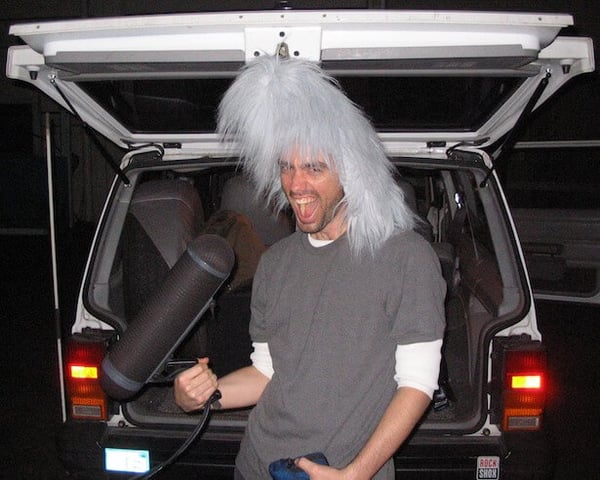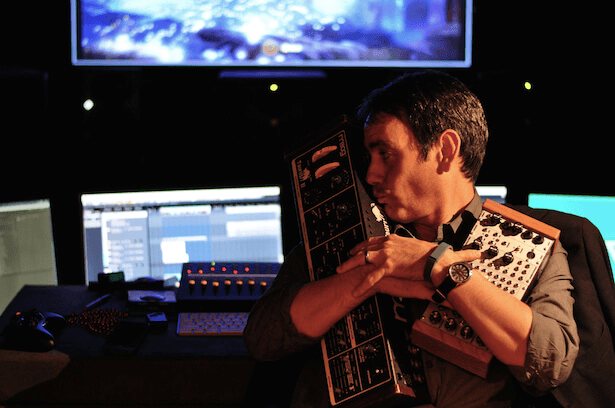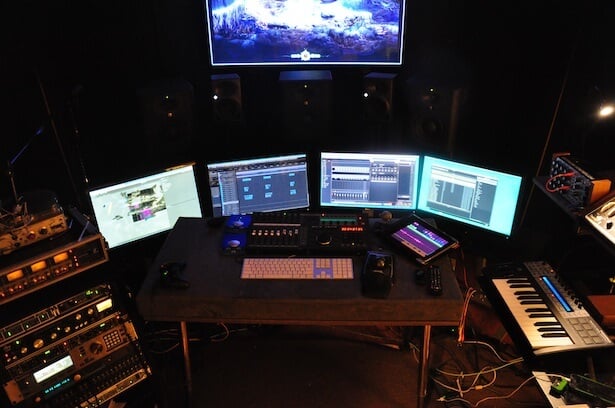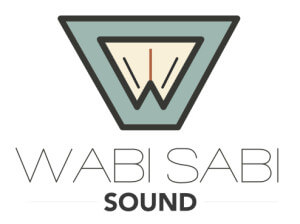by Andrew Emge
The Pro Sound Effects How I Work series (inspired by Lifehacker) asks Hybrid Library owners what inspires them and what tools and routines help them get work done from day to day.
This interview is How I Work #3 - see the link below for other interviews in the series.
Name: Andrew Lackey
Occupation: Sound Designer
Location: Atlanta, GA
Company: Wabi Sabi Sound, Inc.
Most Recent Project: Many current: Ori and the Blind Forest, The Witness, and some unannounced stuff
DAW of Choice: Nuendo
What is your current studio/workspace setup like?
• 5.1 speaker setup: JBL 6328s
• 2.1 speaker setup: Neumann KH 120s
• dual M&K subs
• JLCooper mixing control surface & OSC controller for my iPad that control RME's Totalmix.
^This is my monitor set up controller so I can pick different speaker configurations and reference levels
• Mac with Nuendo for my DAW
• Gaming PC for when I do game implementation and mixing
...I literally have 6 video monitors (including one in our recording booth) hooked to this system.
• RME interfaces
Software:
• Soundminer for my library
• I’m big into designing my own sound design sample instruments in Kontakt and to lesser extent in Reaktor.
• For DSP I like the suites from iZotope, Waves, Sonnox, GRM, Audio Ease, Soundtoys.
Some of my favorite esoteric plug-ins are:
• U-he’s Uhbik series
• SFX Machine Pro is surprisingly powerful for having a very consumer-looking UI.
• I’m totally geeking out on Blue Cat’s Plug n’ Script.
• Zynaptiq’s PITCHMAP is...unnnnnreal.
Outboard gear:
• Eventide Orville (Harmonizer & Special Effects Processor)
Analog synths:
• Pittsburgh Modular-based Eurorack
• Moog Taurus (basically the same as the Moog Rogue without the keyboard)
I’m really into recording too:
• full Sound Devices 744t field kit
• Sennheiser MKH8000 modular series mics with various shotgun, XY, and MS rigs
• Neumann KM 140s, TLM 103s and probably 25 other lesser dynamics, condensers and specialty mics
• Hydrophones, contact mics, experimental stuff. When asked about my favorite sound design tool I say a microphone.
How long have you been a freelancer?
6 years. Halloween 2008 is Wabi Sabi Sound, Inc.’s official legal birthday. Our lawyer was pretty proud of that.
What is one thing you know now you wished you had known 5 years ago?
Whew...I don't know...my brain doesn't work this way. I feel grateful for where I am and to wish to change the past would be a wish to be elsewhere. Also, I love challenges, and things I'm challenged by now will steer me to places 5 years from now that I could not imagine today.
What software/hardware/gadgets can you not live without?
Microphones and some recording device. It’s my baseline. When I first started out my mentor, Dane Davis, had me running all over LA looking for crazy stuff to record. Also, my first roles on films with him were as a foley supervisor, editor, mixer. I learned the language of sound design by making things happen acoustically first.
Now, what 16 years later, I’m still doing the same thing, but I also have my own library I’ve amassed as a bonus. I take a recorder everywhere. If something catches my ear...I record it. I liken it to a chef having their own garden or looking around in the woods for mushrooms. You can’t help but create something unique when you start from scratch.
Where do you find inspiration for your sound design work?
 |
|
Andrew using his favorite sound design tool:
the microphone.
|
Once you’ve honed in on WHY you’re making the sounds...not WHAT sounds to make...but WHY…you start to build a context (or an inspiration) for every future choice you make for the project. When you know WHY, suddenly you can focus. You can confidently peel away insignificant sounds, ideas or cliches that are only there because only WHAT was answered prior to your understanding. This is an evolving understanding throughout a project’s life cycle. In fact, often the film or game makers themselves haven’t fully figured out all of the WHYs by the time you start. I feel that’s why they’ve hired me….my ability to explore that with them and use my talents in sound design to make it happen.
What’s your favorite time-saving shortcut/tool?
Nuendo is a beast of productivity shortcuts. Logical editing, insane automated exporting functions, etc. I recently did a video of them for a forum conversation I was in comparing DAWs:
What's a typical day like for you?
By nature I'm a right brain person with 0 need for routine, but now that I have Wabi Sabi Sound to run, young kids and projects….I have to be pretty efficient with my time. I actually have a step by step routine I follow now. I do Wabi’s admin work first thing before anyone shows up. This includes journalling, processing email, doing project management, catching, organizing and scheduling tasks floating in my brain. After that I free flow on design and mixing with meetings thrown in. I also TRY to hit a running or mountain bike trail 2-3 days a week during abbreviated lunches.
What are your top 5 films of all time?
1. The Matrix - it's an all time great film in my opinion, but as a young sound assistant on it I got to see some truly brilliant sound people work.
2. Black Stallion - gorgeous sound...its like a Monet painting to me.
3. Touch of Evil / Citizen Kane - Orson Wells took it to another level by using sound creatively.
4. Taxi Driver - There is some weird stuff going on in this film. I was becoming conscious of sound design when I saw it for the first time. The “You talking to me?” scene...notice the kids-on-a-playground sounds in the background. And the final shot of the film...tweaky….like this dude is still not OK. But it's the sound that does it.
5. Texas Chainsaw Massacre - Man, that iconic "earrror" foreshadowing sound. And not just the sound, but the set up of that sound. It has to be set up for it to work.
 |
|
Finding inspiration with... a windjammer?
|
I wanted to fill out my general library more. I try to use my own library as much as I can, but ultimately I'm going to pull (or record) the best sound I can for any given scene. The Hybrid Library has a lot of things covered that I just may not have....and I'm wanting more options from the other overused commercial libraries.
Where's the best place for people to follow your work or contact you?
Website: www.wabisabisound.com
Twitter: @andrewlackey
Facebook: www.facebook.com/pages/Wabi-Sabi-Sound/123627780075
LinkedIn: www.linkedin.com/in/andrewlackey
YouTube: www.youtube.com/channel/UCACD4M_P8kM6GFuuxWWa-FQ
IMDb: www.imdb.com/name/nm0480113
Andrew Lackey Complete Credits
 |
| Sweet, sweet gear. |
→ Check out other interviews in the How I Work series archives!
Follow Pro Sound Effects on Twitter, Facebook, & LinkedIn for more sound designer interviews, industry news, and library releases.














